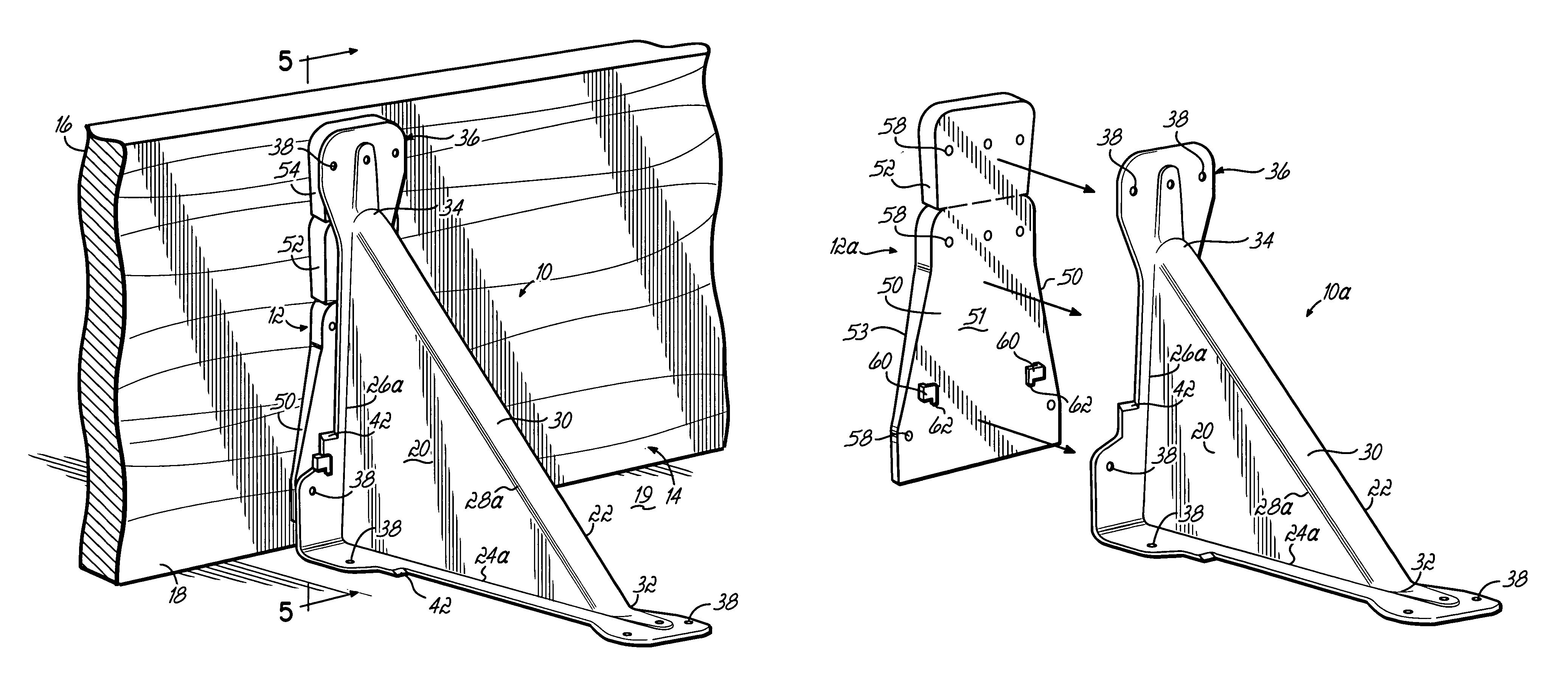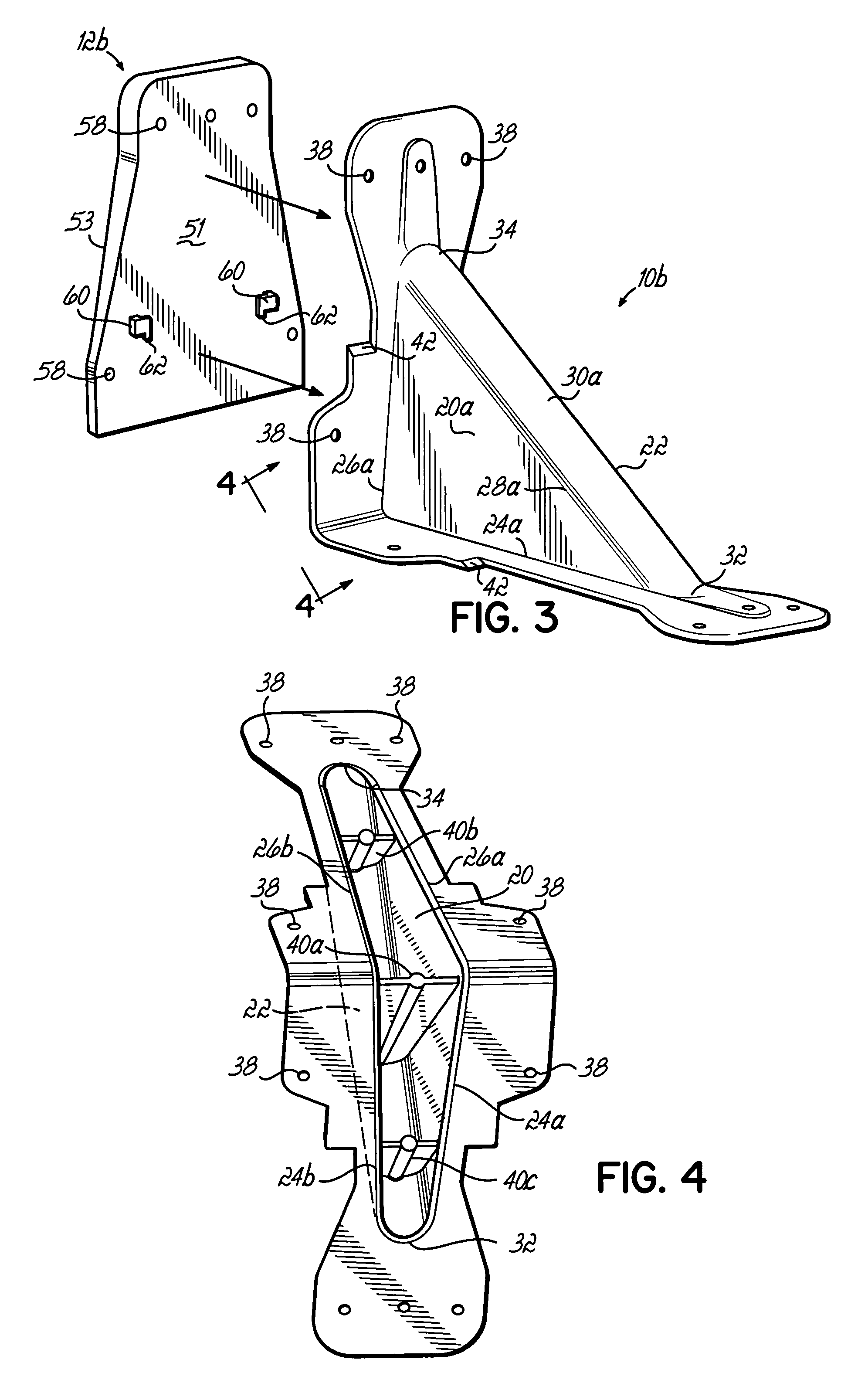Concrete form brace and battering wedge
a concrete form and wedge technology, applied in the direction of forms/shuttering/falseworks, shaping building parts, ways, etc., can solve the problems of not always dimensionally uniform, wooden blocks are typically cut into triangular shapes, and wooden blocks are usually damaged, so as to facilitate the securing of the brace and add rigidity
- Summary
- Abstract
- Description
- Claims
- Application Information
AI Technical Summary
Benefits of technology
Problems solved by technology
Method used
Image
Examples
Embodiment Construction
[0018]In FIG. 1, there is shown an exemplary brace 10 and battering wedge 12 according to the present invention, for supporting a concrete form member 14 in an upstanding relation to a concrete casting surface 19. The brace 10 includes first and second confronting sidewalls 20, 22 each having a generally triangular shape. First and second adjacent side edges 24a, 26a and 24b, 26b of the respective sidewalls 20, 22 are positioned to form an included angle of approximately 90 degrees. While second sidewall 22 and second side edges 24b, 26b are not visible in FIG. 1, these features are shown in FIG. 4 for a corresponding brace 10b.
[0019]A third side edge 28a, 28b of the respective sidewalls 20, 22 is disposed opposite the angle between the first and second side edges 24a, 24b, 26a, 26b. The brace 10 further includes a backwall 30 extending between the third side edges 28a, 28b of the first and second sidewalls 20, 22. The backwall 20 has a first end 32 proximate the first side edges 2...
PUM
 Login to View More
Login to View More Abstract
Description
Claims
Application Information
 Login to View More
Login to View More - R&D
- Intellectual Property
- Life Sciences
- Materials
- Tech Scout
- Unparalleled Data Quality
- Higher Quality Content
- 60% Fewer Hallucinations
Browse by: Latest US Patents, China's latest patents, Technical Efficacy Thesaurus, Application Domain, Technology Topic, Popular Technical Reports.
© 2025 PatSnap. All rights reserved.Legal|Privacy policy|Modern Slavery Act Transparency Statement|Sitemap|About US| Contact US: help@patsnap.com



